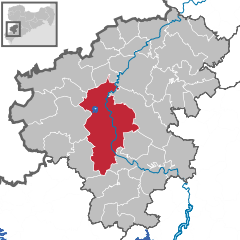Zwickau
| Zwickau | |
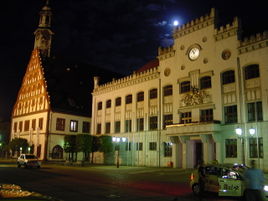 |
|
 |
|
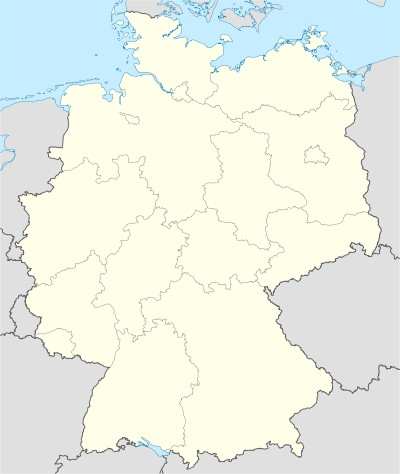 Zwickau
|
|
|
Location of the town of Zwickau within Zwickau district
|
|
|---|---|
| Coordinates | |
| Administration | |
| Country | Germany |
| State | Saxony |
| District | Zwickau |
| Town subdivisions | 5 Stadtbezirke with 35 Stadtteile |
| Lord Mayor | Dr. Pia Findeiss (SPD) |
| Basic statistics | |
| Area | 102.54 km2 (39.59 sq mi) |
| Elevation | 241-444 m |
| Population | 94,340 (31 December 2009)[1] |
| - Density | 920 /km2 (2,383 /sq mi) |
| Other information | |
| Time zone | CET/CEST (UTC+1/+2) |
| Licence plate | Z |
| Postal codes | 08001–08067 |
| Area code | 0375 |
| Website | www.zwickau.de |
Zwickau/Saxony (German pronunciation: [ˈtsvɪkaʊ]) in Germany, former seat of the government from south-western region at Free State of Saxony, belongs to an industrial and economical core region. Nowadays it is the capital city of country district Zwickau. The city is situated in a valley at the foot of Erzgebirge and also part of the so called Saxon triangle metropolitan area, a network of economical relations with Leipzig-Halle, Dresden. The city counts slightly below 100,000 inhabitants, has a regional catchment for over 480,000 people.
The city can be easily accessed by car through the nearby Autobahns A4 and A72. Along with a railway main station (Zwickau-Hbf) the city is also reachable by a public airfield with small aircraft.
Zwickau, also known as city of Automobiles and Robert Schumann, is the cradle of Saxon automotive industry with an over one hundred years old tradition. The city has a long and glorious history in automotive development and in automobile industry along with Auto Union. Well known over Germanys border are trademarks as Horch, Audi, Sachsenring and Volkswagen. The "Westsächsische Hochschule Zwickau" - University of Applied Siences - has therefore always been an important centre of automotive evolution.
The 166 km long river Zwickauer Mulde has the famous Colditz Castle as its endpoint of a line and the Silver Road, Saxony's longest scenic road, connects Dresden with Zwickau.
The German ADAC City Guide recently wrote: „The town of Zwickau has transformed itself over the years from a traditional mining town into an elegant Art-Nouveau town, which is well worth discovering.“
Contents |
Highlights


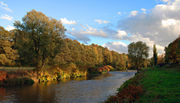
The city of Zwickau has a nearly 900 years old history. Already in the 14th century domestic hard-coal processing have been satisfactorily shown. Because of the silver ore deposits at the Erzgebirge Zwickau ascended in 15th/16th century and grew to an important economical and cultural center of Saxony.
After Wittenberg, it became the first city in Europe which joined the Lutheran Reformation. Later in the 19th century the city's economy was driven by industrial hard-coal mining. The old mountain city of Zwickau is surrounded by gentle heights with extensive forests and a nice municipal park, and in its further surroundings offers many possibilities for excursions to the Hartenstein area, with its castle "Stein", the "Prinzenhöhle", to its castle "Wolfsbrunn" (nowadays a luxury 5 stars Hotel) and to the Auersberg (1019 meters) with the popular winter sport region of Johanngeorgenstadt and to the Vogtland.
In the Old Town the Cathedral and the Gewandhaus (historical cloth merchants' hall) recall the active churchly, trade and artistic life of the flourishing 16th century, called to life by the Schneeberg silver. Zwickau was the main site of the Saxon coal miners, and at the same time one of the most important industrial towns of the country. It's also the cradle of the Saxon Automobile Industry.
When the noise of the shops subsides, one hears the music of Robert Schumann (1810–1856), which is an especial cultural event of art and history for all the visitors to the city. The German actor Gert Fröbe, well known for the James Bond film Goldfinger as the bad guy Auric Goldfinger, was born in Zwickau.
On April 17, 1945 in Zwickau WWII was over by means of US-Army occupation. After withdrawal of US Army in 1945, June, 30th, Zwickau has been occupied by Russian Red Army. Between 1944 and 2003, the city had a population of more than 100,000 inhabitants.
Today, the most important employer in the region is Volkswagen-Saxony Ltd. which assembles its models Golf, Passat and Phaeton in the Zwickau-Mosel vehicle plant.
The Audi-AG operates together with the city of Zwickau now far beyond Germany's borders known and highly worth seeing August Horch Museum in the former Audi works.
Boundaries
Zwickau is bounded by Mülsen, Reinsdorf, Wilkau-Haßlau, Hirschfeld (Verwaltungsgemeinschaft Kirchberg), Lichtentanne, Werdau, Neukirchen, Crimmitschau, Dennheritz (Verwaltungsgemeinschaft Crimmitschau) and the city of Glauchau.
Incorporations
- 1895: Pölbitz
- 1902: Marienthal
- 1905: Eckersbach
- 1922: Weißenborn
- January 1, 1923: Schedewitz
- 1939: Brand and Bockwa
- January 1, 1944: Oberhohndorf and Planitz (with Oberplanitz, Neuplanitz und Niederplanitz)
- February 1, 1953: Auerbach, Pöhlau and Niederhohndorf
- July 1, 1993: Hartmannsdorf
- April 1, 1996: Rottmannsdorfs
- October 1, 1996: Crossen (with 4 municipalities on Janutary 1, 1994 Schneppendorf)
- January 1, 1999: Cainsdorf, Mosel, Oberrothenbach and Schlunzig along with Hüttelsgrün (Lichtentanne) and Freiheitssiedlung
Districts
- City centre (11–15):
Inner city (11), Centre-North (12), Centre-West (13), Centre-South (14), Suburb North (15)
- Urban district East (21–28):
Region Äußere Dresdner Straße/Pöhlauer Straße (21), Eckersbach Housing estate (22), Pöhlau (23), Auerbach (24), Eckersbacher Höhe (E 5/1) (25), Eckersbacher Höhe (E 5/2 und E 5/3) (26), Eckersbacher Höhe (E 1 bis E 4) (27), Region Talstraße/Trillerberg (28)
- Urban district Nord (31–39):
Pölbitz (31),Weissenborn (32), Niederhohndorf (33), Hartmannsdorf (34), Oberrothenbach¹ (35), Mosel¹ (36), Crossen¹ (37), Schneppendorf (38), Schlunzig¹ (39)
- Urban district West (41–44):
Region Reichenbacher Straße und Freiheitssiedlung (41), Marienthal East (42), Marienthal West (43), Brand (44)
- Urban district South (51–59):
Bockwa (51), Oberhohndorf (52), Schedewitz (53), Niederplanitz (54), Neuplanitz (55), Hüttelsgrün (56), Oberplanitz (57), Rottmannsdorf¹ (58), Cainsdorf¹ (59)
Population
| Year | Population |
|---|---|
| 1462 | ca. 3,900 |
| 1530 | ca. 7,677 |
| 1640 | 2,693 |
| 1723 | 3,753 |
| 1800 | 4,189 |
| 1840 | 9,740 |
| 1861 | 20,492 |
| 1871 | 27,322 |
| December 1, 1875 ¹ | 31,491 |
| December 1, 1890 ¹ | 44,198 |
| December 1, 1900 ¹ | 55,825 |
| December 1, 1905 ¹ | 68,502 |
| December 1, 1910 ¹ | 73,542 |
| June 16, 1925 ¹ | 80,358 |
| June 16, 1933 ¹ | 84,701 |
| May 17, 1939 ¹ | 85,198 |
| October 29, 1946 | 122,862 |
| August 31, 1950 | 138,844 |
| December 1, 1960 | 129,138 |
| December 31, 1972 | 124,796 |
| June 30, 1981 | 121,800 |
| 1986 | 120,900 |
| June 30, 1997 | 102,100 |
| December 31, 2002 | 100,892 |
| June 30, 2006 | 97,232 |
¹ Census data
History
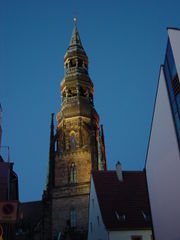

The region around Zwickau was settled by Slavs as early as the 7th century. In the 10th century, German settlers began arriving and the native Slavs were Christianized. A trading place known as terretorio Zcwickaw was mentioned in 1118. The settlement received a town charter in 1212 and hosted Franciscans and Cistercians during the 13th century. Zwickau was a free imperial city from 1290–1323, but was granted to the margraves of Meissen afterward. Although regional mining began in 1316, extensive mining increased with the discovery of silver in the Schneeberg in 1470.
Among the nine churches, the fine Gothic church of St. Mary (1451–1536), with a spire 285 ft. high and a bell weighing 51 tons, is remarkable. The church contains an altar with wood-carving and eight pictures by Michael Wohlgemuth and a remarkable pietà in carved and painted wood, by Peter Breuer.
The late Gothic church of St. Catharine has an altarpiece ascribed to Lucas Cranach the elder, and is memorable for the pastorate (1520–22) of Thomas Müntzer. Of the secular buildings the most noteworthy are the town-hall of 1581. The municipal archives including documents dating back to the 13th century.
The carefully preserved treasures of art, handwritings (incunabels from middle age), documents, letters and books are kept in the Town Archives (e.g. Hans Sachs (*1494 - 1576): Meister Singer volumes) and in the School Library founded by scholars and the city clerk Stephan Roth during the Reformation.
In 1520 Martin Luther dedicated the scripture "On the Freedom of a Christian" to his friend Hermann Muehlpfort, the Lord Mayor of Zwickau. Anabaptist movement of 1525 began at Zwickau under the inspiration of the "Zwickau prophets". The late Gothic Gewandhaus (cloth merchants' hall), built 1522-24 and now converted into a theatre. Confessional warfare plundered the city during the Thirty Years' War. , 1810, June, 8th, Robert Schumann, the world famous composer of romance was born in Zwickau.
Economic History
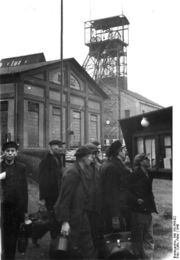
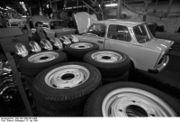
Hard-coal mining is mentioned as early as 1348. However, industrial scale mining started first in the early 19th. The hard-coal mines of Zwickau, and the neighbouring Oelsnitz-Lugau coalfield contributed heavily to the industrialisation of the region and the town.
Following the hard-coal mining, many industrial branches developed in the town: mining equipment, steel and iron works, textile, machinery and further chemical, porcelain, paper, glass, dyestuffs, wire goods, tinware, stockings, and curtains. There are also steam saw-mills, diamond and glass polishing works, iron-foundries, and breweries.
In 1904 the Horch automobile plant was founded, followed by Audi factory in 1909. In 1932 both brands have been incorporated into the Auto Union as independent trademarks. The racing cars of the Auto Union, developed by Ferdinand Porsche and Robert Eberan von Eberhorst, driven by Bernd Rosemeyer, Hans Stuck, Tazio Nuvolari, Ernst von Delius, have been known all over the world. During WWII, the government operated a satellite camp of the Flossenbuerg-Nazi concentration camp in Zwickau, which was placed near the Auto Union plant HORCH. The NAZI administration installed at the Osterstein Castle a hard labor penal camp. Both camps were liberated by US-Army in 1945. After WWII, since 1945, August, 1st, military administration changed from US to Soviet Army. The Auto Union factories of HORCH and AUDI were disassembled by soviets. In 1948 all large companies have been expropriated by East German administration.
With the founding of German Democratic Republic 1949 in East Germany the difficult post-war reconstruction began. In 1958 Horch and Audi factories were merged into Sachsenring plant. At the "Sachsenring" automotive plant the compact cars "Trabant" were manufactured. The small automobiles were comprised of a two-cylinder, two-stroke engine. The car was the first vehicle with industrial series manufactured plastic car body world-wide.
Over a long period in history, the city was the center of hard-coal mining. In 1885 Carl Wolf invented the safety mining-lamp. He held the first world patent for it. Together with his business partner Friemann he founded the "Friemann & Wolf" factory. The plant was one of the first Germany global players in the 19th century. Coal mining was abandoned for economical reasons in 1978 after about 230 millions tonnes were mined from the Carboniferous deposit to depths of over 1,000 meters. However, Zwickau remained a mining-related town until 1992 when the last coke oven plant operated in town was closed. The closure of the plant marked the historical end of 700 years of hard-coal industry in Saxony.
Further, two major facilities of the soviet SDAG Wismut were situated in the city: the uranium mill in Zwickau-Crossen , producing uranium concentrate (so called "yello-cake") from ores of mines in the Erzgebirge and Thuringia, and the machine building plant in Zwickau-Cainsdorf producing various equipment for the uranium mines and mills of East Germany. Uranium milling ended in 1989 and after the reunification the Wismut machine building plant was sold to a private investor.
Economy
The production of the Trabant was discontinued after German reunification, but Volkswagen built a new factory, and Sachsenring is now a supplier for the automobile industry. Nowadays the headquarter of the Volkswagen-Saxony Ltd. (a VW subsidiary) is situated in the northern part of Zwickau.
Education
Zwickau is home of the West Saxon University of Applied Sciences with about 5200 students and two campuses in the area of Zwickau.
Transport
Zwickau is connected to the Autobahn A72 (Chemnitz-Hof) south of the town and to the A4 (Dresden-Erfurt) 15 km north of the town. The city is located on the Sachsenmagistrale-railway line with connections to Nürnberg and Dresden. There are further railway connections to Leipzig as well as Karlovy Vary and Cheb in the Czech Republic. The closest airport is *Leipzig-Altenburg with a very limited number of flights by the low cost carrier Ryan Air. The next major airports are Leipzig-Halle and Dresden offering a large number of national and international flights.
Museums

Downtown there are three museums: an art-museum from the 19th century and the priest houses from 13th century; both next-door houses to St. Marys curch. Just around the corner there is the Robert-Schumann museum. The museums offer different collections dedicated to the history of the town, as well as art and a mineralogical, palaeontological and geological collection with many specimen from the town and the nearby Erzgebirge Mts. and the music of romance.
Zwickau is also the birthplace of Robert Schumann. The house where he was born in 1810 still stands in the marketplace. There is a museum dedicated to him.
The history of the Horch automobile factory is presented at the August Horch Museum, an Anchor Point of ERIH, The European Route of Industrial Heritage.
Historical mayors of Zwickau
- 1501 - 1518: Erasmus Stella
- 1518 - 1530: Hermann Mühlpfort
- Carl Wilhelm Ferber: 1800, 1802, 1804, 1806, 1808, 1810, 1812, 1814
- Tobias Hempel: 1801, 1803, 1805, 1807, 1809, 1811, 1813, 1815, 1817, 1819
- Christian Gottlieb Haugk: 1816, 1818, 1820, 1822
- Carl Heinrich Rappius: 1821, 1823, 1825, 1826
- 1824: Christian Heinrich Pinther
- 1827 - 1830: Christian Heinrich Mühlmann, Stadtvogt
- 1830 - 1832: Franz Adolf Marbach
- 1832 - 1860: Friedrich Wilhelm Meyer
- 1860 - 1898: Lothar Streit, from 1874 Lord Mayor
- 1898 - 1919: Karl Keil
- 1919 - 1934: Richard Holz
- 1934–1945: Ewald Dost
- 1945: Fritz Weber, (acting Lord Mayor)
- 1945: Georg Ulrich Handke, (acting Lord Mayor)
- 1945 - 1949: Paul Müller
- 1949 - 1954: Otto Aßmann
- 1954 - 1958: Otto Schneider
- 1958 - 1969: Gustav Seifried
- 1969 - 1973: Liesbeth Windisch
- 1973 - 1977: Helmut Repmann
- 1977 - 1990: Heiner Fischer
- 1990 - 2001: Rainer Eichhorn
- 2001 - 2008: Dietmar Vettermann
- 2008 : Dr. Pia Findeiß
Twinnings
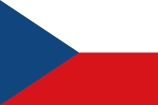 Jablonec nad Nisou, Czech Republic, since 1971
Jablonec nad Nisou, Czech Republic, since 1971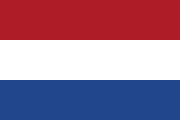 Zaanstad, Netherlands, since 1987
Zaanstad, Netherlands, since 1987 Dortmund, North Rhine-Westphalia, Germany, since 1988
Dortmund, North Rhine-Westphalia, Germany, since 1988
References
- ↑ "Bevölkerung des Freistaates Sachsen jeweils am Monatsende ausgewählter Berichtsmonate nach Gemeinden" (in German). Statistisches Landesamt des Freistaates Sachsen. 31 December 2009. http://www.statistik.sachsen.de/21/02_02/02_02_06g_tabelle.pdf.
 This article incorporates text from a publication now in the public domain: Chisholm, Hugh, ed (1911). Encyclopædia Britannica (Eleventh ed.). Cambridge University Press.
This article incorporates text from a publication now in the public domain: Chisholm, Hugh, ed (1911). Encyclopædia Britannica (Eleventh ed.). Cambridge University Press.
External links
- Official website (German)
- e-Catalogue of the area
- Zwickau up-to-date
- Free Press - Zwickau newspaper
- TV Zwickau - Local Television Station
- August-Horch Museum at Audi Works
|
|||||||
